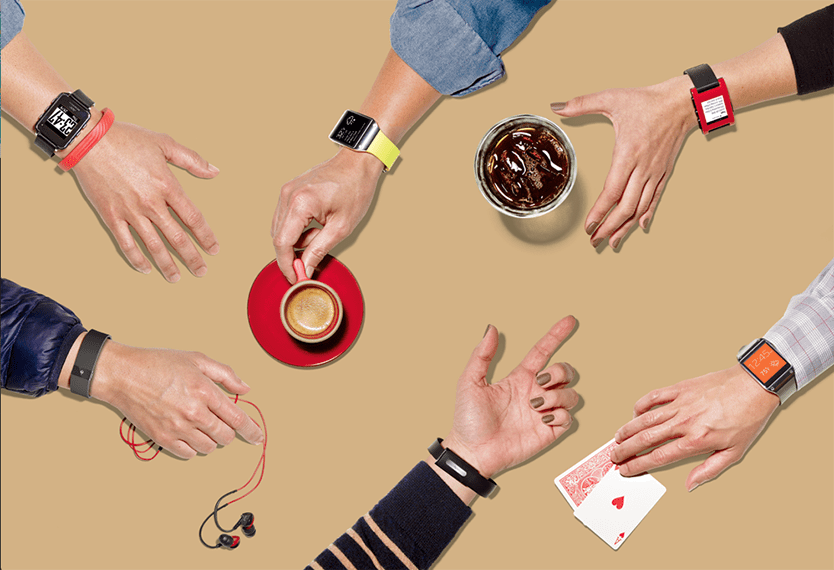
Wearables are starting to take the world by storm. From wearable cameras, to glasses to fitness trackers, heart rate monitors and of course, watches; wearable devices are really catching on, and fast. Wearable devices are also starting to have an impact on a wide range of different industries including fitness, banking, healthcare, retail, travel, manufacturing and even insurance. According to Mindtree the worldwide market for wearable devices is projected to reach $20.6 billion by 2018, reaching an annual growth rate of 36%.
As well as this, Mindtree suggests that by 2018 there will be 485 million global shipments of wearable devices. That is a lot of wearable goods. However, there is a lot of hype in this exciting market, and it is important to understand what is really starting to make a breakthrough and what is not. The health and fitness market is one area where wearables have really started to have a considerable grasp. Check out this article by Mobile Mob on the Fitbit Charge 5, one of the most successful wearables in the market. Yet what has been successful has varied. For example until now it has been reported that people are more reluctant to wear ear based devices, but are fine with wrist and eye ones. That has been starting to change, and ear-based devices are starting to become of greater interest due to their proximity to blood vessels in the ears. However, wrist-based products get far more attention than anything else. People particularly like devices that track their fitness in this way.
The retail industry has recently started cashing in on the opportunity for wearables. Eyewear and wrist gear are particularly popular in this industry. The vision is that wearable technologies can be linked with payment processing to develop an end-to-end retail experience all based on the use of wearable products. It is envisaged that customers will be able to identify items and look at extra information online while they are at the store. This closely links online information with the in-store experience. Some of the big retailers like Tesco have been researching the possibilities in this area.
The banking industry has been developing wearables as well, to develop a better experience for consumers. However, this is considerably more complicated than in the retail sector. Wearables can be used for all kinds of transactions such as making balance inquiries and making payments, as well as following stocks while on the move. However, there is a good deal of regulation in this industry which makes implementation trickier, with regard to customer data. The insurance industry has also been catching on, and has started developing wearables to assess life threat.
Aside from this, manufacturing wearables are being designed to help workers to make decisions. This is a high priority for a number of organisations. One area where such devices can be helpful is in enhancing the safety of workers. This is thought to be a very important application of this technology in this field. Such devices can help workers to better understand when they are faced with hazards, for example. However, challenges do exist in this sector. One example is that using voice recognition in this type of industry is difficult as manufacturing environments tend to be noisy.
The travel and transportation industry has been working on developing wearable technology of its own. Wearables that are thought to be beneficial include helping staff to give passengers information while on the move, looking for and identifying tickets and processing bookings, and getting access to flight information such as boarding statuses. There have been attempts to use Google Glass to inspect airlines on the ground. In this example photos and videos are sent to a headquarters where they can be reviewed by safety professionals. In addition, Garmin has been working on a watch designed for aviators, attempting to provide a solution for the loading of flight plan information.
It is highly likely that wearables can add value to our lives. Yet currently the technology is too expensive to be a realistic prospect for the majority of consumers. Early adopters that love new technology are paying a lot right now, though eventually it is anticipated that prices will come down. Once the wearables become more affordable then they will open up to a broader market of consumers. Major brands are investing in these technologies and it is likely that we will all be wearing devices before too long.

Paula Newton is a business writer, editor and management consultant with extensive experience writing and consulting for both start-ups and long established companies. She has ten years management and leadership experience gained at BSkyB in London and Viva Travel Guides in Quito, Ecuador, giving her a depth of insight into innovation in international business. With an MBA from the University of Hull and many years of experience running her own business consultancy, Paula’s background allows her to connect with a diverse range of clients, including cutting edge technology and web-based start-ups but also multinationals in need of assistance. Paula has played a defining role in shaping organizational strategy for a wide range of different organizations, including for-profit, NGOs and charities. Paula has also served on the Board of Directors for the South American Explorers Club in Quito, Ecuador.











